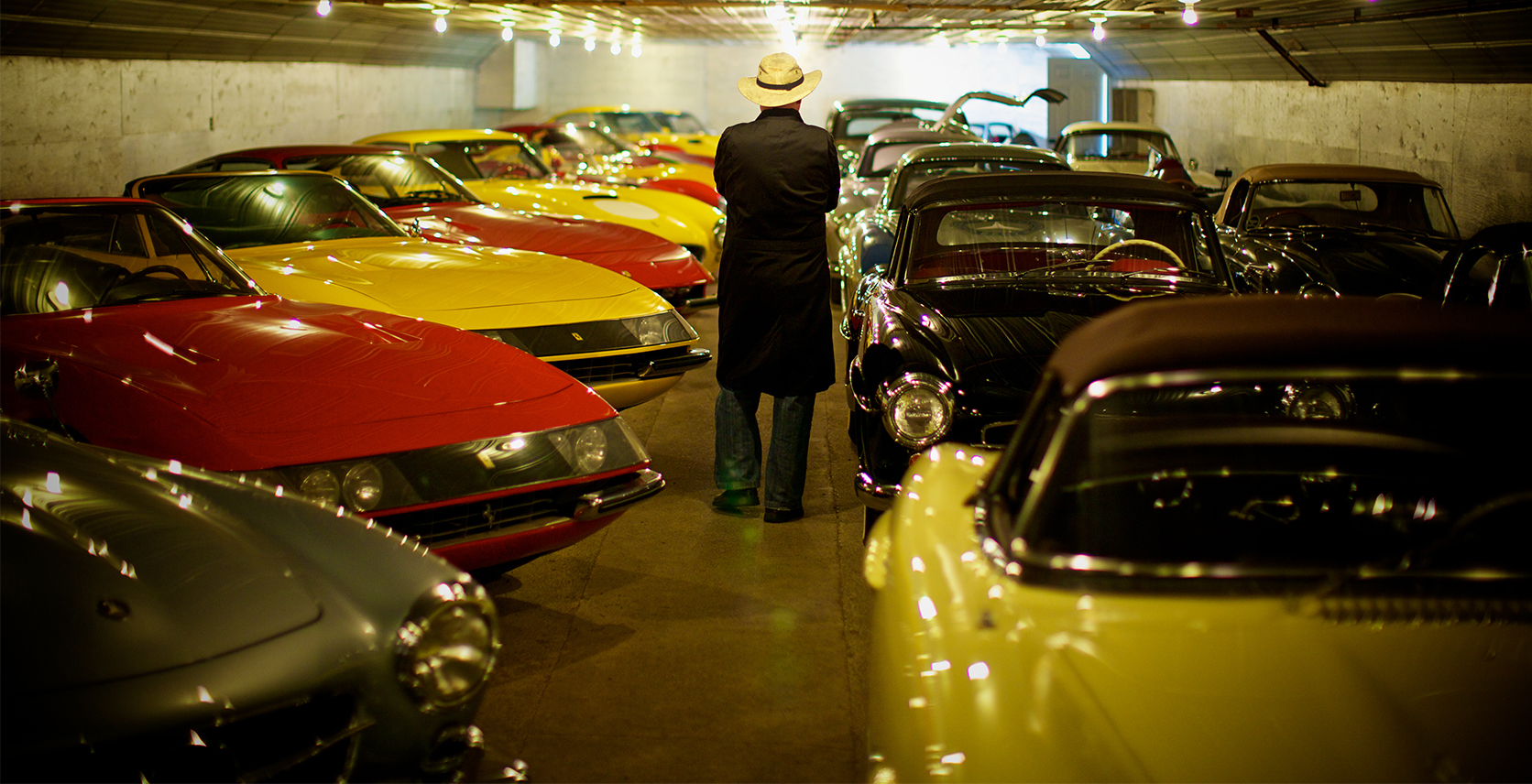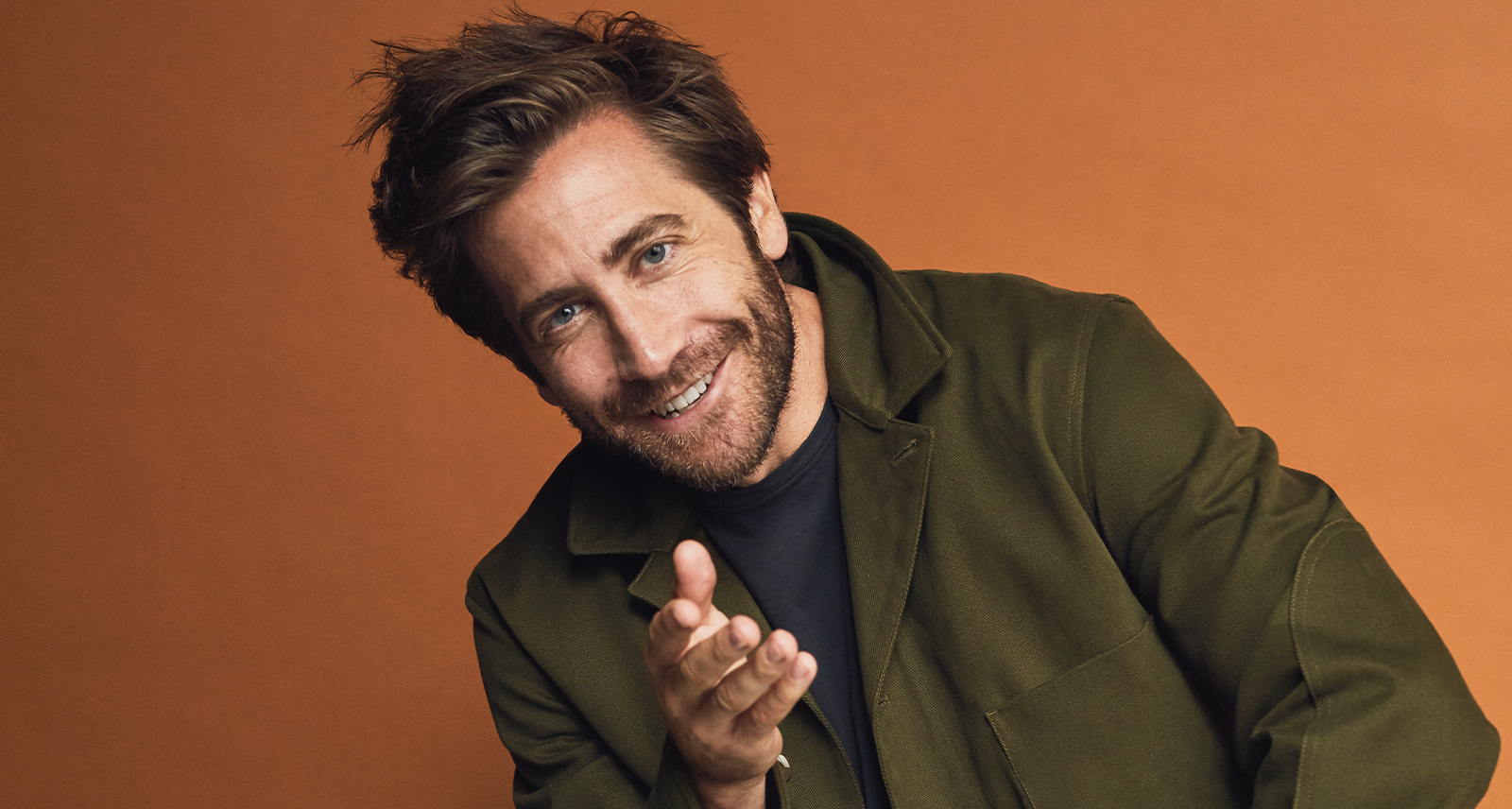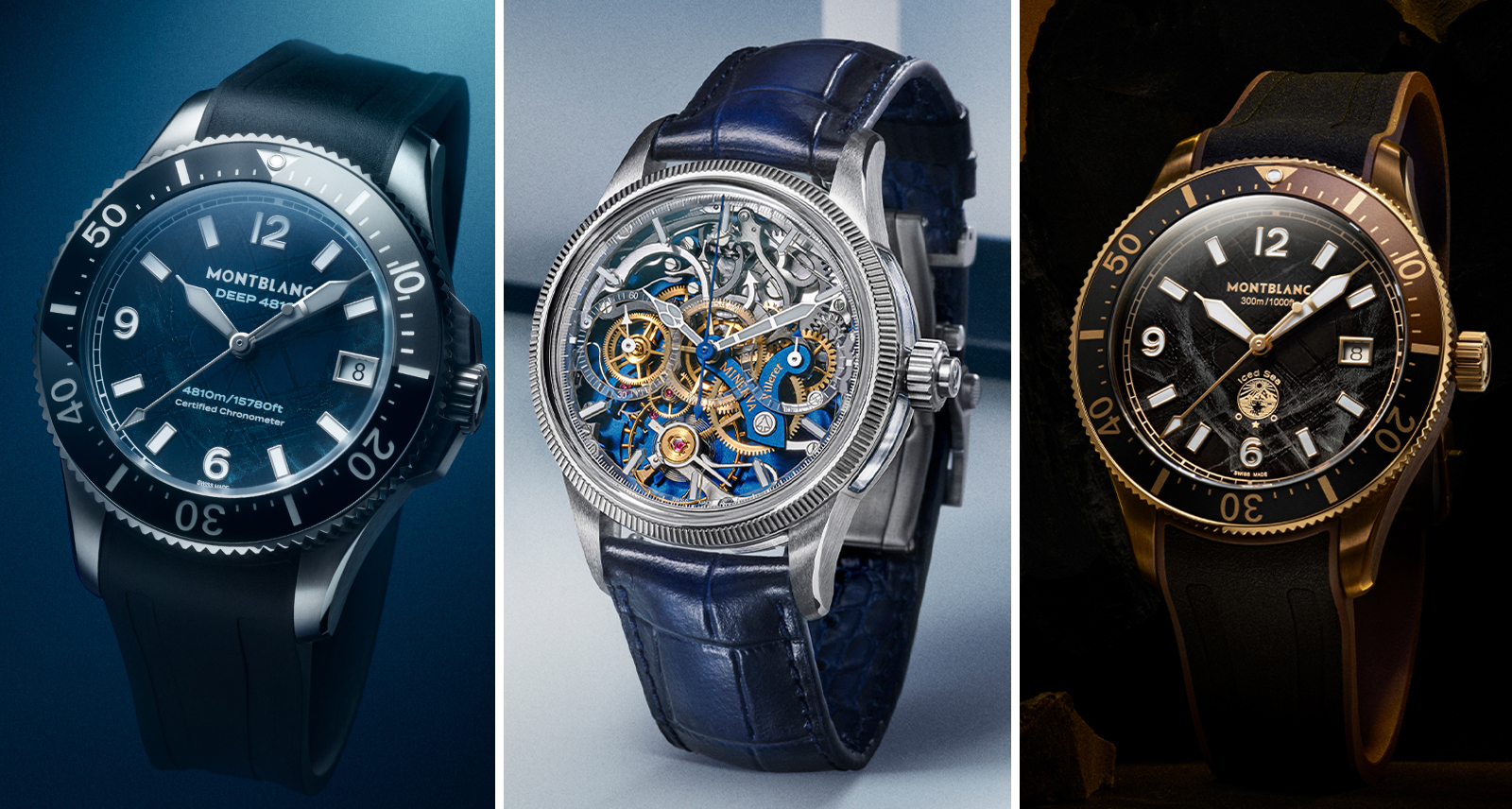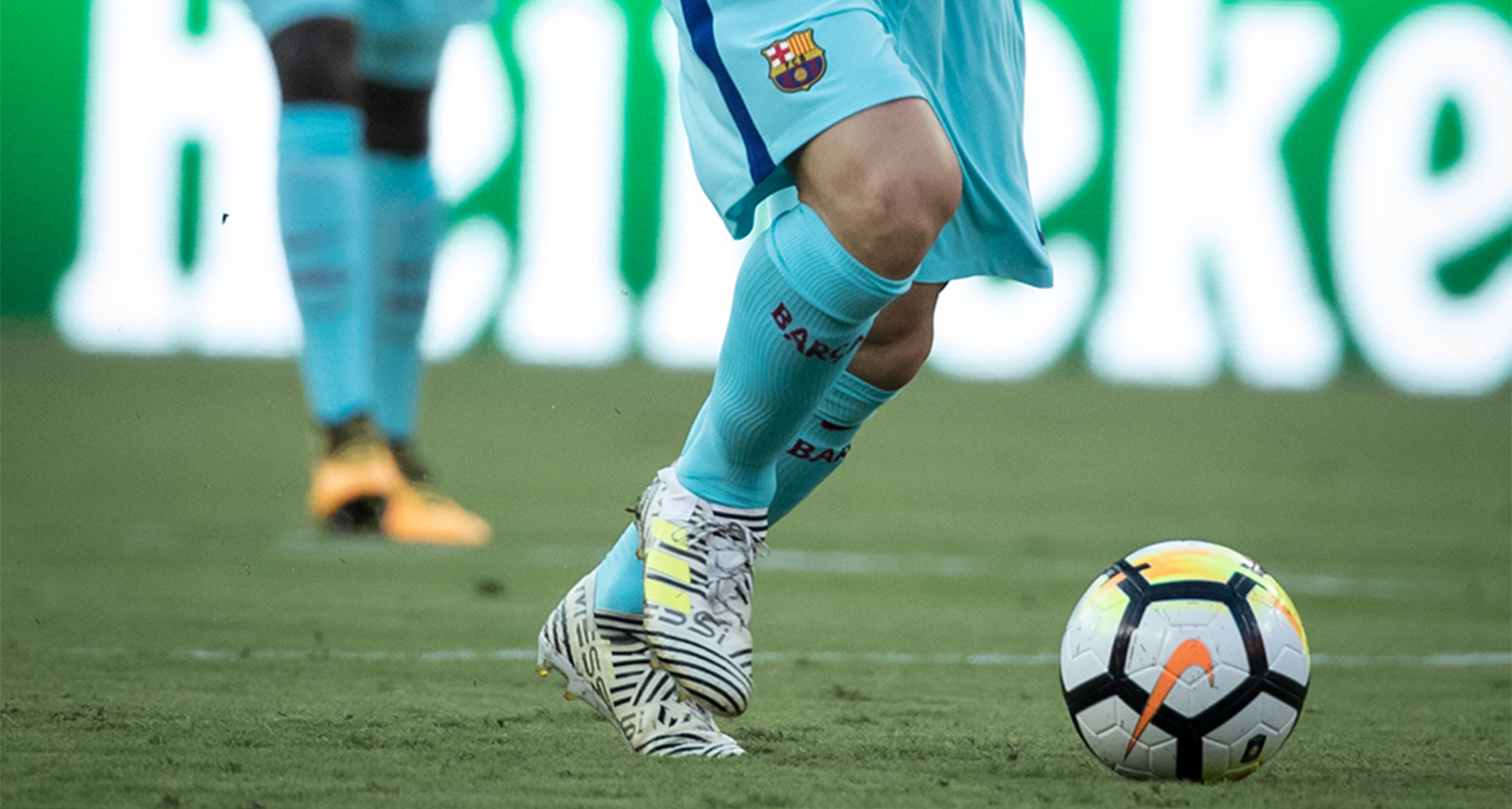How Rudi Koniczek, Mad Canadian Genius, Became the World’s Most Sought-After Restorer of the Mercedes-Benz 300 SL
Deep in the woods of Vancouver Island, just outside Victoria, guarded by high stone walls and a gargoyle-adorned gate, lies a garage safeguarding millions of dollars in shiny, vintage metal: a Porsche 904 GTS, an Avions Voisin C25, an Alfa Romeo Spider Duetto, a couple of D-Type Jaguars, and several — sevral! — Ferrari 250 TRs. And everywhere else you look, crammed cheek by jowl, there are examples of Mercedes-Benz’s 300 SL Gullwing — arguably the first supercar ever. Or, as they are referred to by automotive restoration enthusiasts the world over, “Rudis.”
They are called that when they have been brought back to life by Rudi Koniczek, the German-born Canadian who lives out here. He has spent the last 50 years perfecting a dying art: restoring rare classic automobiles in jaw-slackening detail. Along the way, he’s become perhaps today’s foremost authority on the 300 SL — not to mention the weirdest.
“Peace, love, dope, Hare Krishna, nuke a gay baby whale for Jesus!” Koniczek greets a client. He flashes a genial smile beneath his signature floppy bush hat and driving goggles. “You’ve come all the way from the big city, from Hongcouver!”
Koniczek’s house is a museum of oddities: there are life-sized gnomes, bawdy artworks, and an inordinately large collection of Tintin figurines. (“Tintin is my fucking hero,” he informs me, while giving the grand tour.) Yet well-heeled customers from the far reaches of the globe — Japan, Sri Lanka, and beyond — fly here often, seeking the curator’s ability to Benjamin Button their antiquated autos. He’s time-reversed cars in every condition: burned to the ground, wrapped around telephone poles, found decaying in rat-infested garages. A full restoration takes about 18 months and costs upwards of $350,000.
Though resurrecting classic cars is a big business, it’s low on new blood. The only thing harder than finding the machines themselves is finding someone qualified to do the work. It’s a skill set not on offer at the corner repair shop. This is a meticulous craft, requiring a special breed of obsessive — so over the years Rudi has scouted for protégés just as fanatical about ancient rides as he is. His team, Rudi & Company, consists of eight full-time employees, six of whom have been with him for over 18 years, many since they were children. “People always wonder where I get the guys to work on these cars with me,” he says. “Well, we grow them. We take young people and inspire them and teach them.”
•••
Here inside Rudi & Co.’s bright garage, where light classical music plays while the staff intensely dotes over every last disc brake and window strap, what Koniczek’s taught them looks awfully tedious. When the team receives a shipment — usually via the Port of Vancouver or as air cargo — they begin by taking hundreds of snapshots of the car. Then comes the historical sleuthing; drawing on an extensive library of original shop manuals, parts books, and period photos, they determine exactly how to recreate the model from a specific time period. The car’s serial numbers are matched with those from the factory to make sure it’s authentic. If that all checks out, Rudi gives you a look over, too.
“I say, ‘Come on over, have dinner with me, let’s drink some wine, smoke a couple fatties, get a little weird,’” explains the 68-year-old. His international client list consists largely of well-to-do businessmen with a shared zeal for motors and mirth. “If the guy’s got a gazillion dollars and he’s an asshole, I don’t need to deal with him. He’s got to be able to laugh.”
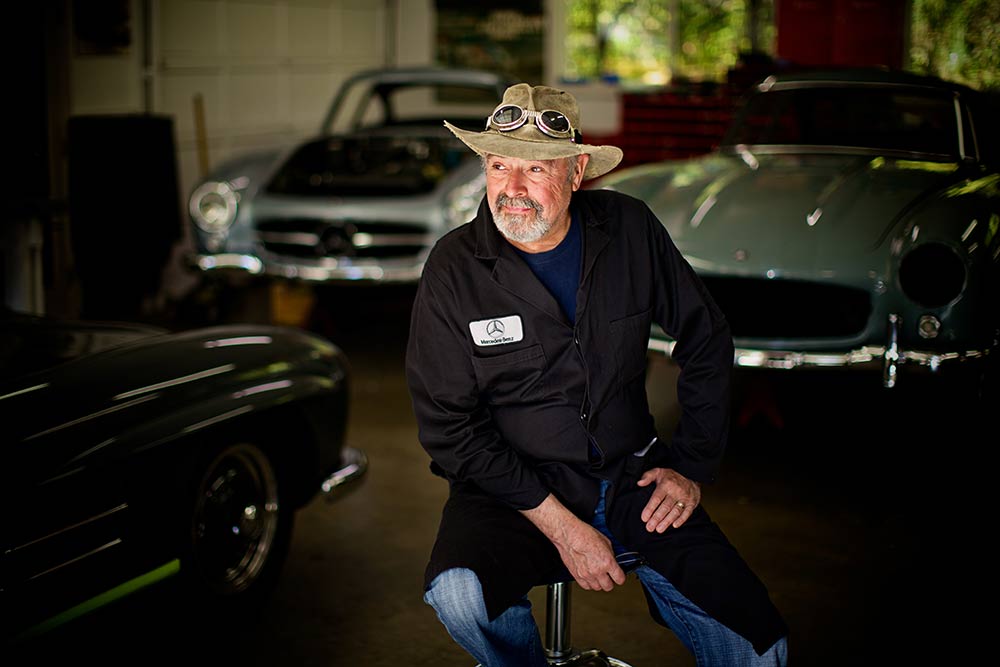
If Rudi likes the cut of your jib, it’s elbow grease time. The entire vehicle is taken apart, down to the last bolt and screw. Missing pieces are sourced from automakers; if a Gullwing needs a new part, he’ll order it from Daimler-Benz headquarters in Stuttgart, based on the car’s history and the company’s parts library. Nearly all restoration — upholstery, body repair, wood crafting, you name it — is done in-house, from scratch, by hand. Only chrome work is outsourced. Rudi oversees all, pacing through his workshop like a conductor; this is approved, that needs to be finished in natural pigskin. Clients request all manner of customizations, from colour schemes to air conditioning, but most are rejected. Each detail, right down to the stitching and paintjob, must be faithful to the classic vehicle’s year and make. “When you restore a painting from the masters, it’s not altered,” Rudi says. “You don’t fuck with the Mona Lisa.”
What gets Koniczek’s goat: the automotive philistines out there. He worries appreciation for the classics is waning. “I’m seeing a shift in the market. We’re getting more people interested in how much they can make at the next auction.” (If you’re curious, his Gullwings usually go for about $1.5 million USD.) “They don’t care about the car, the history, the passion, or what we do.”
•••
What Koniczek does began in his childhood as a refugee in Canada. His family fled Germany during World War II and settled in Toronto, where he’d routinely get bullied by classmates for his heritage. Tintin comics provided an escape, as well as an introduction to automotive art; he was beguiled by cartoonist Hergé’s meticulous attention to detail in capturing European sports cars and racers. Before long, Rudi fell in love with the sensuous, graceful shape of the Gullwing; a road-going version of Mercedes’ W194 championship racer, it was the car of the moment, owned by movie stars and pro drivers alike. He became obsessed with 300 SL model car kits.
Eventually, he’d take a job at a local hobby shop, where he’d build Mercedes slot cars and race them competitively against rival stores. By 15, he was confident enough in his work to lug a case of slot cars to Mercedes-Benz’s Canadian headquarters, asking to see then-president Rainer Lange-Mechlen. “He looked at the cars, then at me, and said to his assistant, ‘Give this man a job.’”
“To me, it’s a rolling piece of art. It’s kinetic art. You can hang a painting on a wall and it’s one-dimensional. But when you get into a car, it’s an emotion. It’s visceral, because you’re part of the art.”
Young Rudi got his dream gig, becoming the only factory-trained apprentice in Canada. He studied under three German auto-schlossermeisters — that’s German for master mechanic — and gleaned their trade secrets about pre-war machines. Four years into it, however, he was still teeming with untapped potential. One day, during a lunch break, his meister Josef Dunjko imparted to him some sage advice: “He said, ‘Sie haben es in Ihrem kleinen Finger’ — you have it in your little finger. You’re destined for other things. You have to run far away from this place.”
So he did. He fled to the other end of the country and opened a shop servicing performance cars in Victoria in 1971. At first, he received only clunky British machines. He decided to try leaving business cards on Mercedes-Benzes he’d spot at parking lots. Finally, he got a bite — someone needed work on a Mercedes 230 Finback. Word got out about Rudi’s magic, and more Benzes arrived at his door. Within years, he’d be servicing the island’s high-end clientele. Within a decade, he’d be the world’s go-to man for returning vintage supercars to showroom condition.
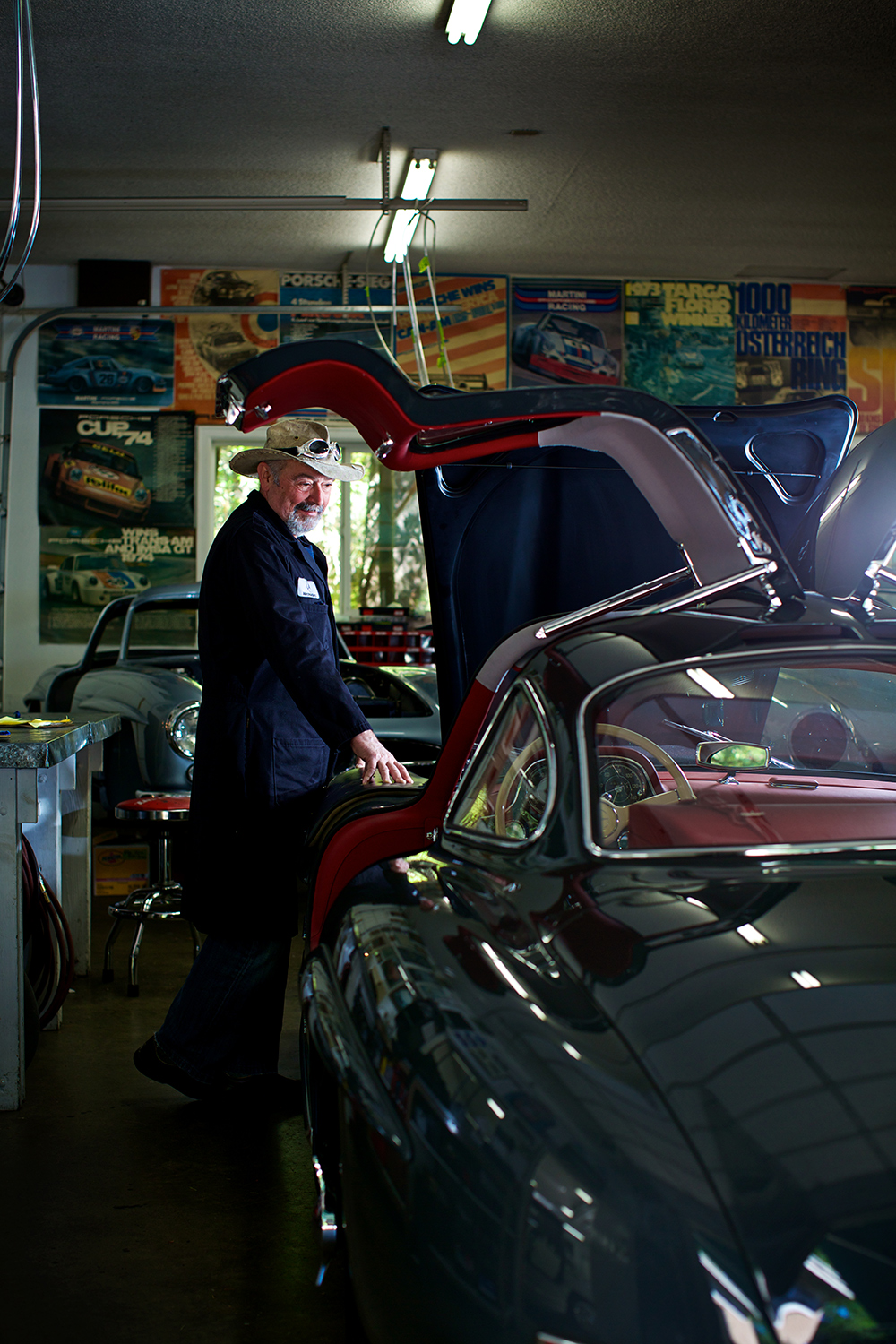
To date, Rudi & Co. have raised over one hundred 300 SLs from the dead. Among them is the famous 1959 SL Roadster Prime Minister Justin Trudeau inherited from his late father, Pierre, and drove at his wedding to his wife, Sophie. Ninety-five per cent of Koniczek’s projects come from outside the country — he’s currently restoring cars from Mexico, Monaco, and Thailand. Despite never advertising, his clientele has spread internationally through word-of-mouth referrals. “Lots of people tell me, ‘I find you really refreshing,’” he says. “It’s called OB: outrageous behaviour. It makes people remember you.”
•••
A few months later, Koniczek and I connect via phone for a follow-up conversation — or, as he calls it, “verbal intercourse.” He tells me what he’s wearing. “I’ve got a Hawaiian shirt on, my Mercedes-Benz lab coat, and my hat with the goofy glasses. The goggles, that’s my shtick, my trademark. They hide me from all the bullshit. And there’s a lot out there, Alex.”
Perhaps that’s really what makes Rudi such a global draw — he’s as authentic as the shade of metallic silver on his Gullwings. Behind his sophomoric humour, there’s a schoolboy wonder in the way he beams about historic motors. He’s the last of the old guard, but still possesses the heart of a child. In a world full of cynics and fakers, that makes him the rarest of models. The man’s a restorer of souls.
“I pay tribute to the meisters that taught me, and the first engineers and craftsmen that built the SL,” he says. “To me, it’s a rolling piece of art. It’s kinetic art. You can hang a painting on a wall and it’s one-dimensional. But when you get into a car, it’s an emotion. It’s visceral, because you’re part of the art. You get to drive it, smell it, hear it, feel it. It’s the most awesome feeling in the world.”
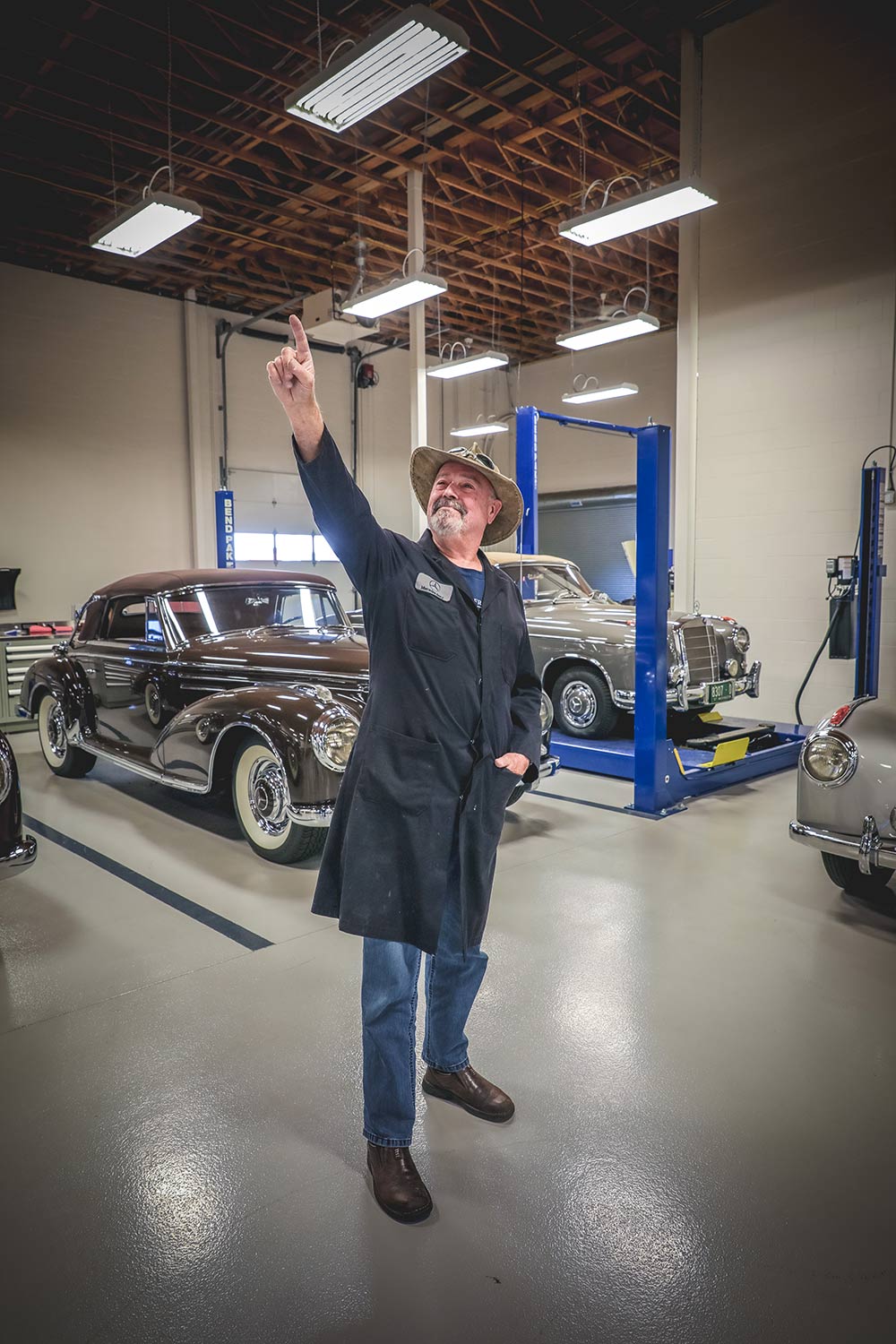
While Koniczek’s focus is on the autos of yore, lately he’s been thinking of the road ahead. To ensure his tradition lives on, he’s decided to bequeath his business to friends at GAIN, a Vancouver Island-based luxury dealer group, rather than sell it. He helped the same group launch a local racetrack, the Vancouver Island Motorsport Circuit, and will continue working with them. After a quarter century in Saanich, his shop and team will move to downtown Victoria and take on a new name: Classic Car Centre Canada. Once the 10,000-square-foot facility is complete, it will be equipped to handle every aspect of auto restoration, from bodywork to electrical systems to mechanics. Having a “one-stop classic car centre,” he says, has long been his dream.
But more than that, Rudi hopes to keep the tradition rolling. With fewer workers skilled in auto restoration today, and fewer schools teaching it, he wants a guarantee that his craft and crew will carry on when he’s gone. “I’m proud to pass it on,” he says. “Our legacy is what we leave behind.” And what he’s leaving behind, above all, is a philosophy: that when we look at automobiles, we should see a story — romance, intrigue, suspense, adventure. It’s the kind of outlook that reminds us why we like cars in the first place. Old machines, timeless passion.
